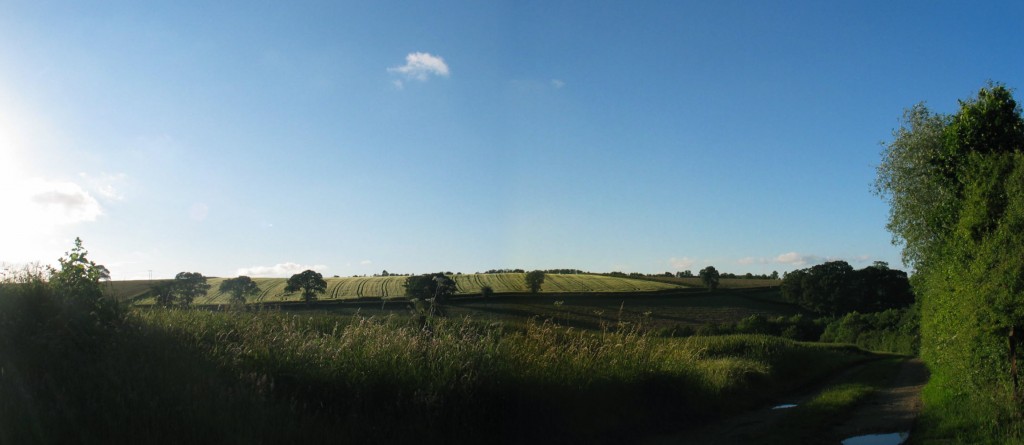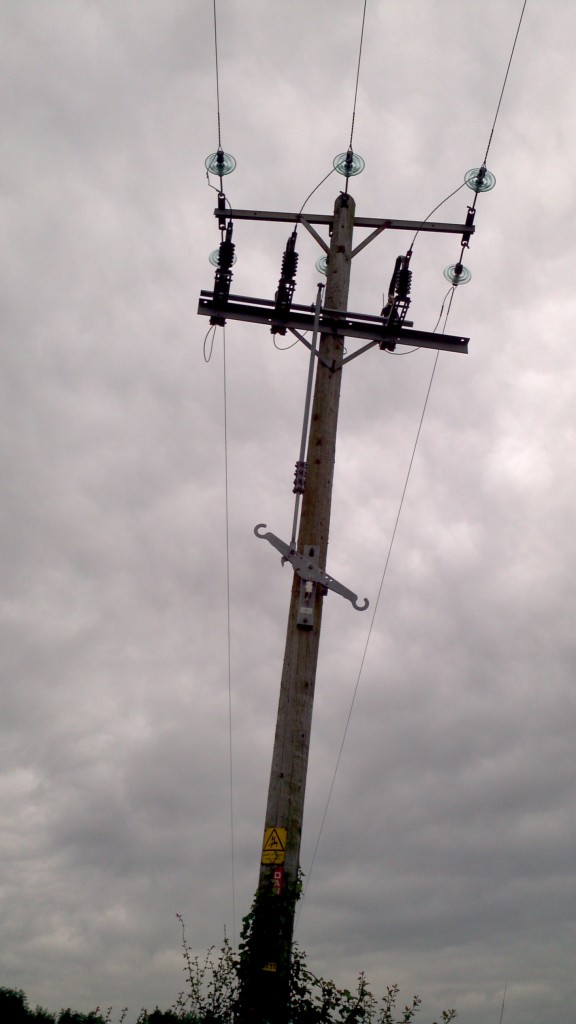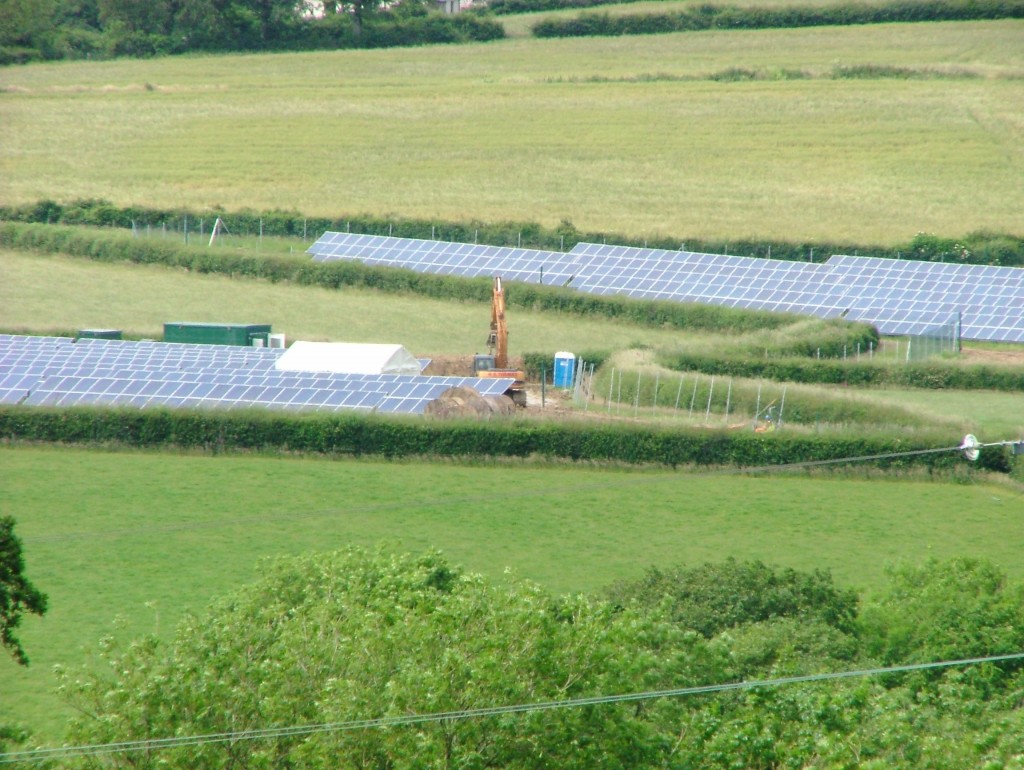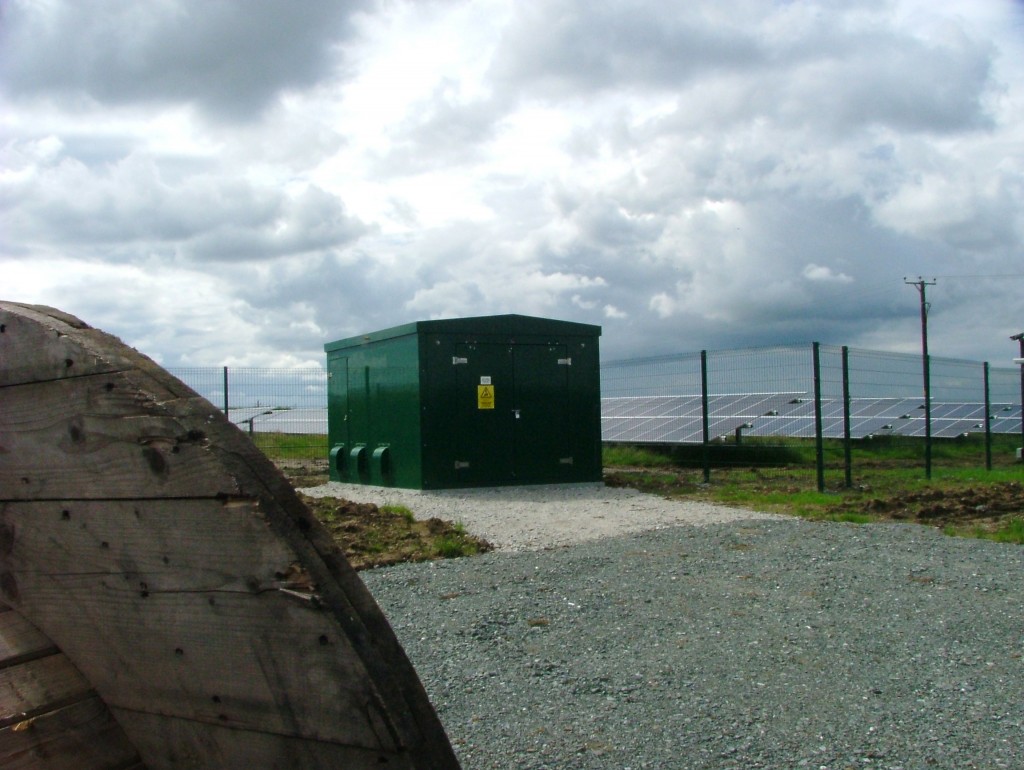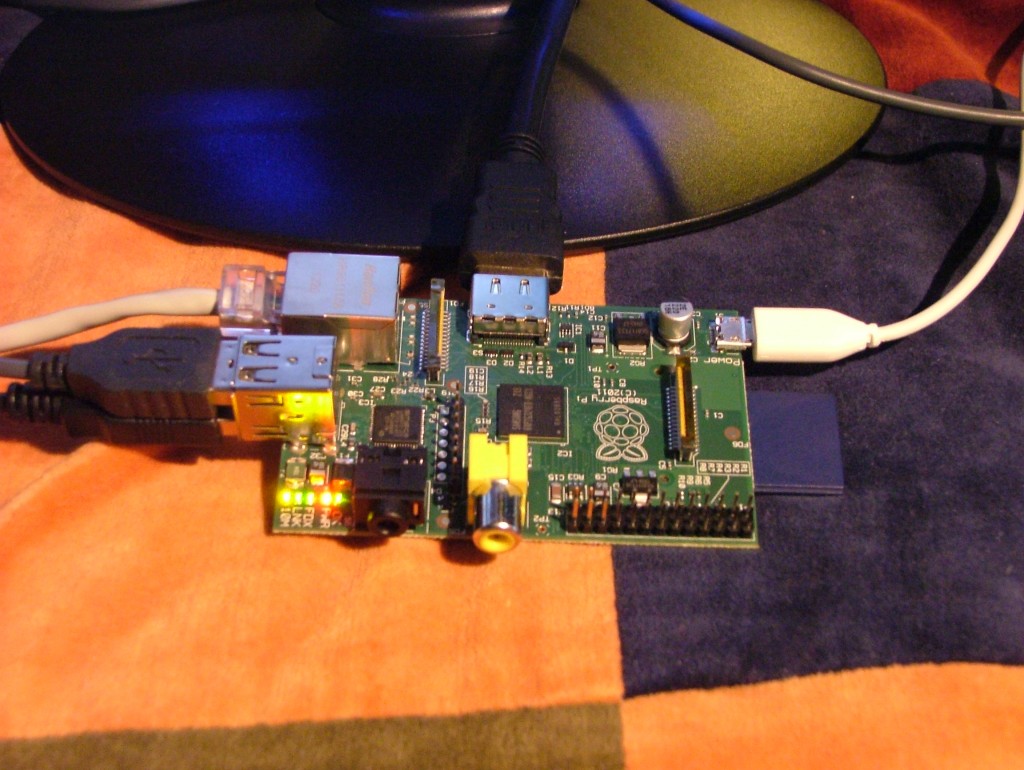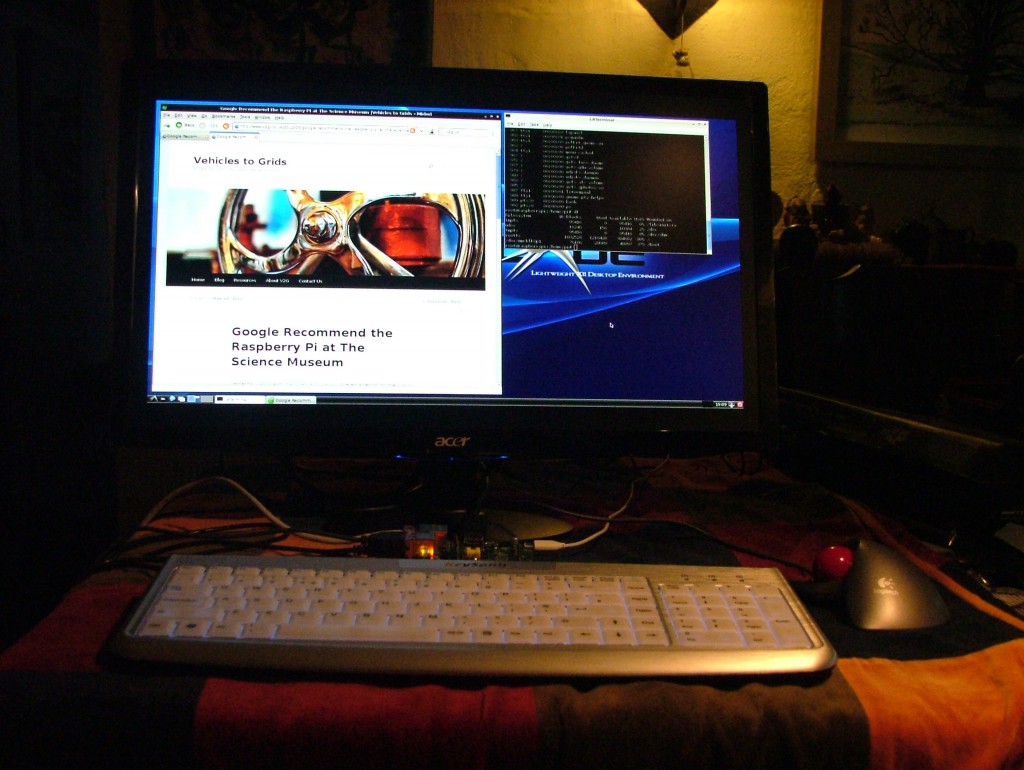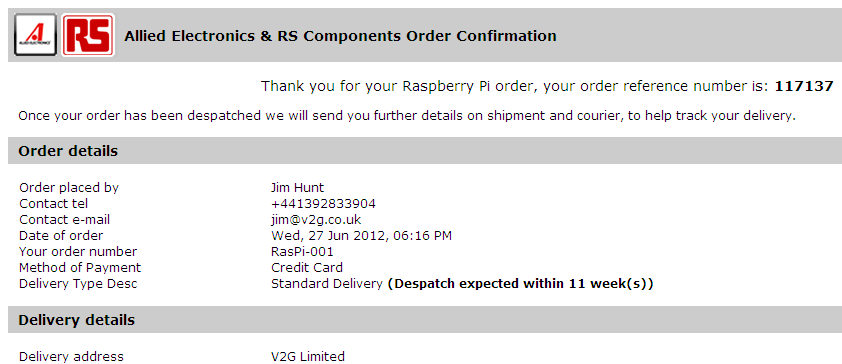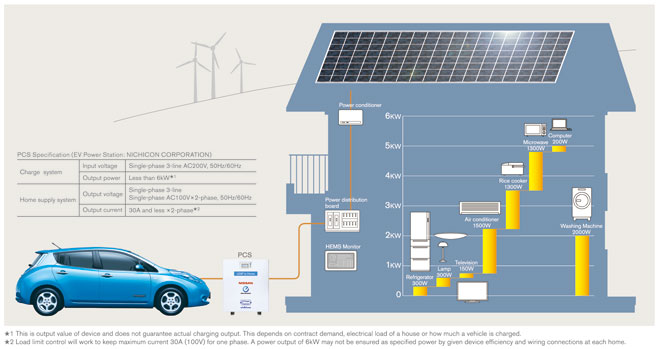There follows the basis of a 5 minute presentation I will be giving to a meeting of the Teignbridge District Council planning committee later on this morning, hastily copied from PowerPoint. Upon my return I’ll let you know what effect it had, if any. You can also download a PDF version of the presentation here.
Gold’s Cross Hill Solar PV Park
Objections to the proposalfromJim Hunt
V2G LimitedWho Am I?
Technical Director of V2G Limited
V2G is short for “Vehicle to Grid” (Small scale electricity storage. Nissan Leaf = 24 kWh)
I have decades of experience in the automation of electricity distribution.See Appendix A for more information
Why’s That Relevant?
In brief, I help keep your lights on!
I help keep the lights on in places like Nigeria, Ghana and Sierra Leone too.
Solar parks need a lot of that sort of technology as well. A fact that never seems to get mentioned by their proposers.
“Sustainability” of renewable energy projects, especially solar “farms”, requires “grid level energy storage”, which doesn’t currently exist at sufficient scale (1 MW for 1 Day = 24,000 kWh).
Electrical energy storage never seems to get mentioned by developers either.See Appendix B for more information
Planning Guidelines?
From paragraph 3.19 of your officer’s report before you – “NPPF introduces the presumption in favour of sustainable development”
From paragraph 3.38 of that report – “The proposal is considered to be finely balanced”
From the Ministerial foreword to the NPPF – “Sustainable means ensuring that better lives for ourselves don’t mean worse lives for future generations”.
“Sustainable development is about change for the better, and not only in our built environment. Our natural environment is essential to our wellbeing, and it can be better looked after than it has been.”
Let’s look more closely at how “sustainable” this particular proposed PV “development” really is.
Food Security versus Energy Security?
The Realities of Solar PV!
The Site is Mainly Arable Land
From paragraph 3.2 of the report in front of you – “There can be no certainty about whether [the land] is Grade 3[b] or 3a”
Despite that comment, please note the pink coloured areas on the Dudley Stamp Land Use Inventory for the Gold’s Cross Hill site
The Site is Mainly Arable Land (cont.)
Recent site photographs clearly show the cereal crop currently being grown on the land:
Expert Opinions
Zero Carbon Britain – “On a larger scale, putting solar farms on prime agricultural land that could be used for food production is problematic.”
See http://econnexus.org.uk/a-brief-view-of-the-bowhay-farm-solar-pv-public-information-evening/
and http://www.zerocarbonbritain.org/
David Green of the EcoIsland CIC, and Sustainability Executive of the Year – “Given the choice solar PV should be on roofs, not on arable land.”
See http://www.eco-island.org/images/uploads/press/BusinessGreen_Leaders_Awards_-_David_Green_Announcement_-_04-07-2012.pdf
Solar PV “Efficiency”?
Efficiency in terms of incident solar energy converted into electrical energy is around 15%.
However please note the “Load factor”/“Capacity factor” statistics for renewable energy sources in the UK, recently released by DECC (Solar PV for the first time)
The Reality of “8 MW”
Even if we generously assume a 12% load factor that works out to 1 MW on average in practice.
According to Zero Carbon Britain – “[Solar PV] energy is generated primarily in the summer, which clashes with our peak consumption which is highest on long, sunless winter nights.”
With no electricity storage on site, output of the proposed solar park will vary from zero on a long, sunless winter night to 8 MW on a sunny summer’s day, with an average of 1 MW at best.
Grid Load Balancing at Present
This variation between seasonal electricity demand and solar PV supply, plus intra-day variations, causes problems for the National Grid – “Unlike gas, electricity can’t be stored in large quantities. As a result, part of National Grid’s role involves making sure that demand and supply match up. We do this on a minute-by-minute basis. It’s a bit like trying to keep a car at 50mph while driving up and down hills.”
See http://www.nationalgrid.com/uk/Electricity/AboutElectricity/Balancing+the+network/
The majority of the 8 MW maximum output of the proposed solar park needs to be quickly available from an alternative source if the sun suddenly becomes hidden behind some heavy cloud.
Watch a video – http://www.ted.com/talks/view/lang/en//id/1401 – “[Storage] changes everything!”
In the UK this will typically be a gas fired power station running at less than full rated output by design.
The Future?
It’s unknown, but let’s examine “What might happen in 25 years time?”
What if the “Solar PV industry” collapses along with the subsidies?
What if the “industry” lives on, but is consolidated into the likes of EDF and E.ON?
What if an “efficient and economic” energy storage technology is developed, so that solar PV parks are no longer “50 acre white elephants”?
What if that technology happens to be pumped heat?
See https://v2g.co.uk/2012/06/isentropic-and-western-power-to-test-pumped-heat-electricity-storage/
Please note the Eden Project is investigating more “joined up” ways of handling these hugely important questions.
See http://econnexus.org.uk/the-award-winning-eden-project-solar-pv-staff-share-scheme/
In Conclusion
Please take note of the NPPF paragraph 112 – “Local planning authorities should take into account the economic and other benefits of the best and most versatile agricultural land. Where significant development of agricultural land is demonstrated to be necessary, local planning authorities should seek to use areas of poorer quality land in preference to that of a higher quality.”
Please also take note of the Devon Structure Plan policy CO14 – Conserving Agricultural Land – “The use of agricultural land, particularly the best and most versatile agricultural land (grades 1, 2 and 3a), for any form of development not associated with agriculture or forestry should only be permitted where there is an over-riding need for development in that location which outweighs the need to protect such land or where it implements other policies and proposals of the Development Plan.
Finally
Finally please also take note of the Teignbridge Local Plan policy P1 on Agriculture – “Development of the best and most versatile agricultural land (MAFF grades 1, 2 and 3a) will only be permitted where there is a strong case for development on that site which overrides the need to protect such land. Where development is permitted on the best and most versatile agricultural land and there is a choice of sites, the lowest grade land suitable for the development will be used first.”
I invite you to join me in exercising your democratic right to vote to refuse this proposed development. In my professional opinion the “fine balance” is tipped against the proposal. The costs to sustainable development in this rural area if permission is granted are apparent, whilst the benefits (if any) are not.
Appendix A
15 Years Technical Expertise in Electricity Distribution
See https://v2g.co.uk/about-v2g/
Member of Regen SW
See http://www.regensw.co.uk/directory/?filter=quick&keywords=v2g
Smart Grid Consultant
Smart Grid = “An electrical grid that uses computers and other technology to gather and act on information, such as information about the behaviors of suppliers and consumers, in an automated fashion to improve the efficiency, reliability, economics, and sustainability of the production and distribution of electricity”
From http://en.wikipedia.org/wiki/Smart_grid
Appendix A (cont.)
Financial Information eXchange protocol working group on electrical energy pricing
See http://fixprotocol.org/working_groups/smartgrid/members
US National Institute of Standards and Technology (NIST) PAP03 working group on the common specification for electrical energy pricing and product definition
NIST PAP09 working group on energy interoperation (Demand Response & Distributed Energy Resources)
See http://www.naesb.org/pdf4/smart_grid_ssd062410announcement.doc
Appendix B
Air Break Isolator near Exminster (Manual)
The Current UK “Smart Grid” (cont.)
Pole Mounted Recloser near Kennford
Current UK “Solar Farms”
Eastacombe Farm near Clawton
Current UK “Solar Farms” (cont.)
Great Knowle Farm near Pyworthy
Current UK “Solar Farms” (cont.)
This solar farm must have an 8 MW capable “Connection” to the National Grid
All solar farms must have “Protection”
All solar farms must have “Communication”
To be truly “Sustainable” solar farms desperately need “Energy Storage” as well.
Will all that fit into one “Big Green Box?”


